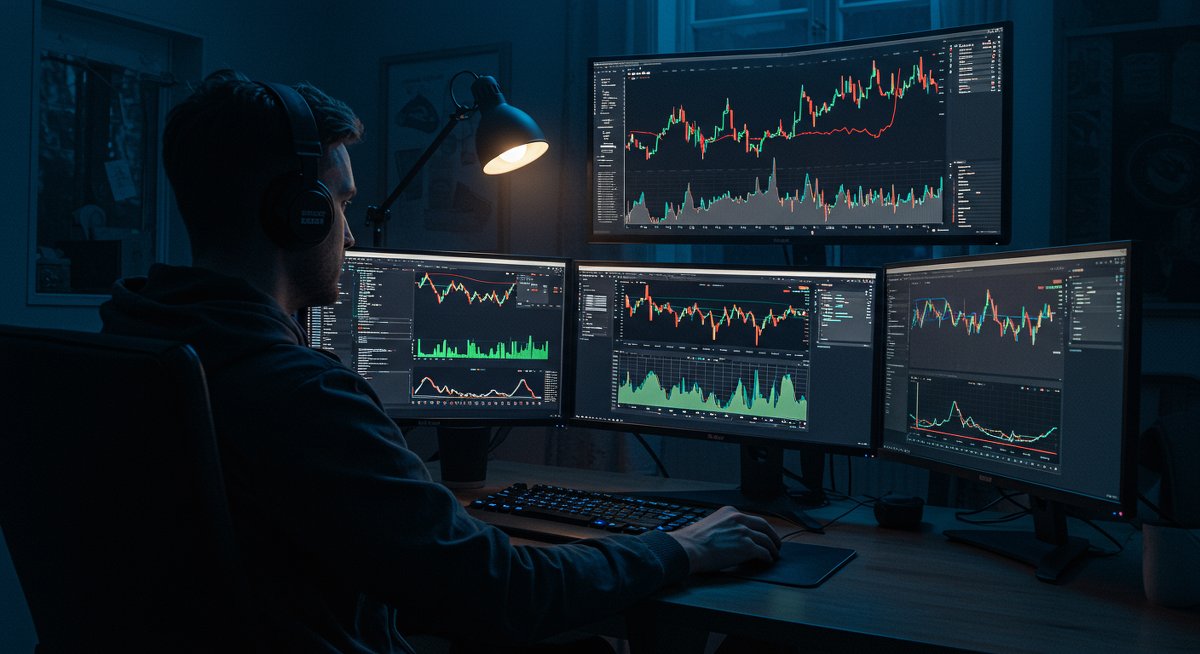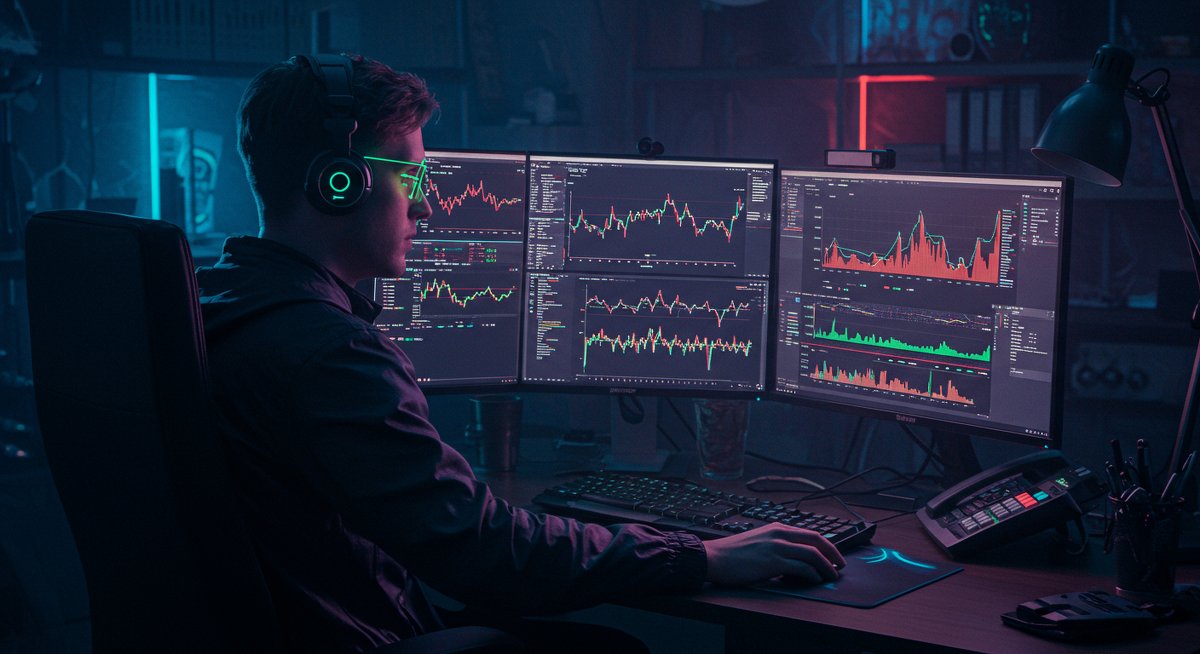Why This ADA Post Hit Home
So I was browsing r/CryptoMarkets the other day and saw a post that really caught my attention. Someone was asking about their Cardano (ADA) holdings, and it turns out they've been holding since way back in 2018. I immediately felt for this person, because anyone who's been in crypto that long has probably experienced a similar situation. You get into a project early, believe in the vision, and then...well, things don't always go as planned. The market shifts, narratives change, and suddenly you're bag-holding something you're not so sure about anymore.
It's easy to say "just cut your losses," but it's a lot harder to actually do it, especially when you've been in the game for years. This post really made me think about the emotional side of crypto investing, and how difficult it can be to make rational decisions when you're dealing with real money and years of history. Plus, the original poster mentioned averaging down to $1.50. That shows commitment and a strong belief in the project. Abandoning ship now would feel like a waste of all that effort. It's a tough spot to be in. Crypto can be a wild ride, and it's these kinds of situations that really test your resolve. I wanted to dive deeper into this, because it highlights a very real and common challenge in the crypto world: How do you decide when to let go of a long-term investment that hasn't performed as expected? What factors should you consider, and what strategies can you use to make a decision you won't regret later? It’s not just about the money; it's about the time, the effort, and the emotional investment.

Peeling Back the Layers of the Cardano Situation
Okay, so let's break down what's actually going on in this Cardano situation. The original poster bought in early, likely during the 2017-2018 bull run, when ADA was generating a ton of buzz. They were probably drawn in by the promises of a new, innovative blockchain that would solve all the problems of Bitcoin and Ethereum. Cardano had a strong team, a solid roadmap, and a charismatic leader in Charles Hoskinson. Back then, the potential seemed limitless. But crypto is a fast-moving space. What’s promising today can be old news tomorrow. The fact that they averaged down to $1.50 shows they continued to believe in the project even as the price declined. That's a key piece of information. It tells us they weren't just blindly holding; they were actively managing their position. However, the fact that they're now questioning their investment suggests that their conviction is waning. They've seen the market go through multiple cycles, and ADA hasn't lived up to the early hype.
They also brought up some important points about the changing market dynamics. The idea that institutions have "ruined everything" is a common sentiment among retail investors who feel like they're being outmaneuvered by larger players. The question of whether "alt season is gone forever" is another valid concern. In the past, altcoins would often outperform Bitcoin during certain periods, offering the potential for massive gains. But in recent years, Bitcoin has dominated the market, leaving many altcoins struggling to keep up. All of this is to say that the original poster's concerns are legitimate. They're not just based on emotion; they're based on a realistic assessment of the current crypto landscape. It's a complex situation with no easy answers. That’s what makes it so relatable to many crypto investors right now.
What This Really Means For Your Own Crypto Bags
So, what does this Cardano dilemma mean for you, the average crypto trader or investor? Well, first off, it's a reminder that even the most promising projects can fail to live up to expectations. Don't get too emotionally attached to any particular coin or token. Always be willing to reassess your investment thesis and cut your losses if necessary. This is especially important if you're holding a large bag of a particular altcoin. Diversification is key to managing risk in the crypto market. Don't put all your eggs in one basket, even if you're really excited about a project.
Second, it highlights the importance of having a clear exit strategy. Before you invest in any cryptocurrency, you should know when you're going to sell. What price target are you aiming for? What level of losses are you willing to tolerate? Having a plan in place will help you make rational decisions when the market gets volatile. Third, it underscores the need to stay informed and adapt to changing market conditions. The crypto market is constantly evolving, and what worked in the past may not work in the future. Be prepared to adjust your strategies as needed. For example, if you were primarily focused on altcoins in the past, you might want to consider shifting some of your portfolio to Bitcoin, which has proven to be a more resilient store of value. Always consider your own personal risk tolerance and investment goals. What works for one person may not work for another.
The Stuff Nobody Wants to Talk About: Downside Risks
Let's be real. Nobody likes to talk about the potential downsides of their investments. It's more fun to focus on the upside and dream about hitting it big. But ignoring the risks is a recipe for disaster. In the case of Cardano, there are several potential risks that investors should be aware of. First, there's the risk of further price declines. While ADA has already fallen significantly from its all-time high, there's no guarantee that it won't go lower. The crypto market is notoriously volatile, and anything can happen. Second, there's the risk of technological obsolescence. The crypto space is constantly evolving, and new, more innovative blockchains are emerging all the time. Cardano could become outdated if it fails to keep up with the latest developments.
Third, there's the risk of regulatory crackdowns. Governments around the world are starting to pay closer attention to the crypto market, and they could impose new regulations that make it more difficult to buy, sell, or use cryptocurrencies. This could have a negative impact on the price of ADA and other altcoins. Fourth, there's the risk of project failure. While Cardano has a strong team and a solid roadmap, there's always a chance that the project could fail to deliver on its promises. Technical issues, security breaches, or internal conflicts could all derail the project. It's important to acknowledge these risks and factor them into your investment decisions. Don't just blindly hold onto your ADA bags hoping for the best. Be prepared to cut your losses if necessary.
Trading Crypto When You're Outside the US
If you're trading crypto from outside the US, there are a few extra things you need to keep in mind. First, you need to be aware of the tax implications of your trading activity. Depending on where you live, you may be required to pay taxes on your crypto gains. The rules vary widely from country to country, so it's important to do your research and understand your obligations. Some countries have very strict crypto tax laws, while others are more lenient.
Second, you need to be aware of the regulatory environment in your country. Some countries have banned or restricted the use of cryptocurrencies, while others are more welcoming. Make sure you're trading in compliance with local laws. Third, you need to be aware of the currency exchange rates and fees. When you're trading crypto in a foreign currency, you'll need to convert your funds back and forth. This can add up in fees, so be sure to shop around for the best rates. Finally, you need to be aware of the security risks. Crypto exchanges and wallets are vulnerable to hacking and theft, so it's important to take steps to protect your funds. Use strong passwords, enable two-factor authentication, and store your crypto in a secure wallet. It’s worth looking at platforms like KuCoin, which are available worldwide and offer a wide range of altcoins.

Actually Deciding What To Do Next With Your Crypto
Okay, so how do you actually decide what to do with your Cardano holdings (or any crypto you're questioning)? Here's a step-by-step guide:
- Reassess your investment thesis: Why did you buy ADA in the first place? Do those reasons still hold true today? Has anything changed that would invalidate your original thesis? Be honest with yourself.
- Evaluate the current market conditions: What's the overall sentiment towards Cardano? Is it still a popular project with a strong community? Or has it fallen out of favor? Look at the price action, the trading volume, and the social media buzz.
- Consider your risk tolerance: How much risk are you willing to take? Are you comfortable holding onto ADA in the hope that it will eventually recover? Or would you rather cut your losses and move on to something else? Be realistic about your own limitations.
- Set a price target: If you decide to hold onto ADA, set a price target for when you'll sell. This will help you avoid getting caught up in the hype and making emotional decisions.
- Set a stop-loss order: To protect yourself from further losses, set a stop-loss order at a level you're comfortable with. This will automatically sell your ADA if the price falls below a certain point.
- Monitor the market: Keep a close eye on the market and be prepared to adjust your strategy as needed. The crypto market is constantly changing, so you need to stay informed.
My Personal Take on This Whole Crypto Mess
So, here's my take on this whole Cardano situation. I think it's a tough call. On the one hand, ADA has a lot of potential. It's a technically sound project with a strong team and a dedicated community. On the other hand, it's been underperforming for a while now, and there's no guarantee that it will ever reach its former glory. If I were in the original poster's shoes, I would probably lean towards cutting my losses and moving on. I know it's hard to do, especially after holding for so long, but sometimes you just have to admit that you made a mistake and move on.
The crypto market is full of opportunities, and there's no reason to stay stuck in a losing position. That being said, if you're still bullish on Cardano and you're willing to take the risk, then by all means, hold on. But be sure to manage your risk carefully and don't let your emotions cloud your judgment. Ultimately, the decision is up to you. Just be sure to make an informed decision based on your own research and your own risk tolerance. And remember, no one can predict the future. The best you can do is to make the best possible decision based on the information you have available. And don’t be afraid to change your mind if new information comes to light. Crypto is a long game, and it’s okay to adjust your strategy along the way.